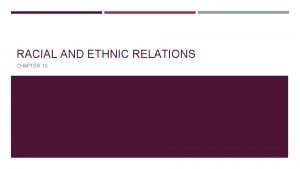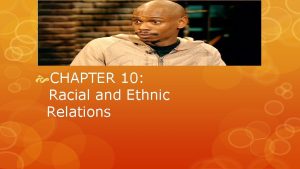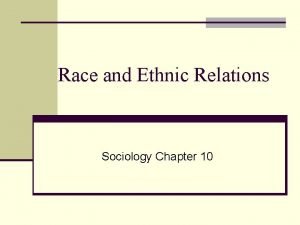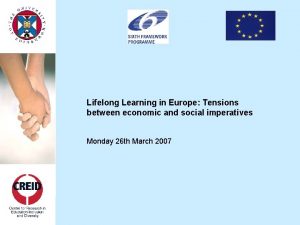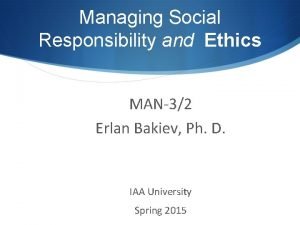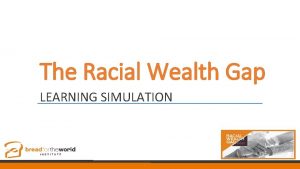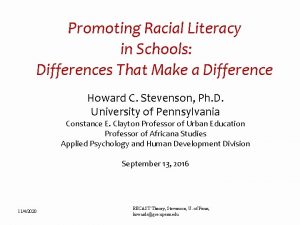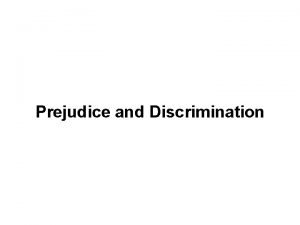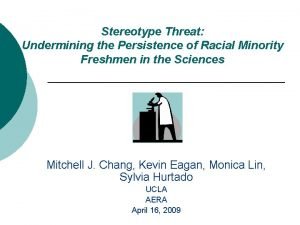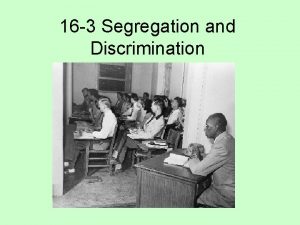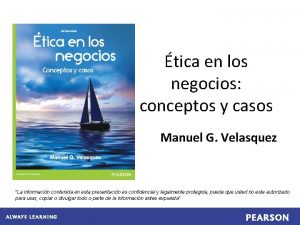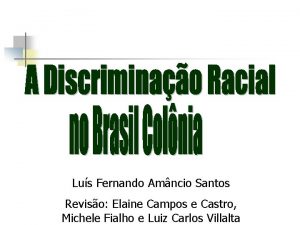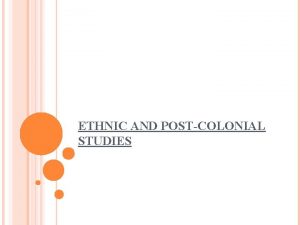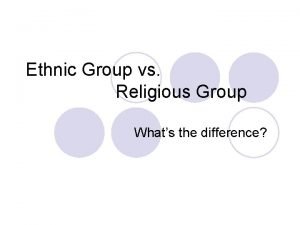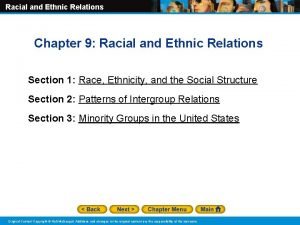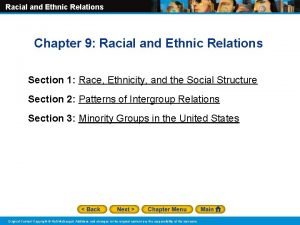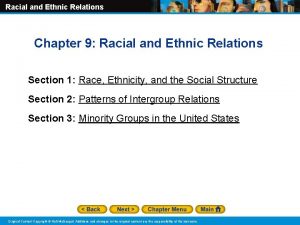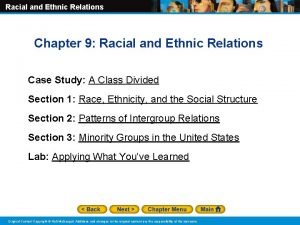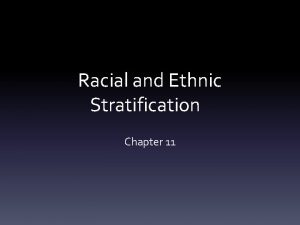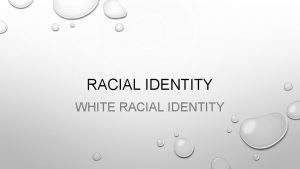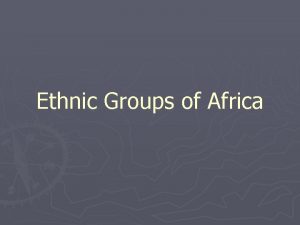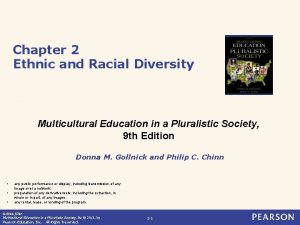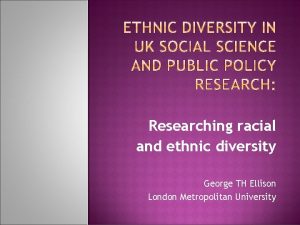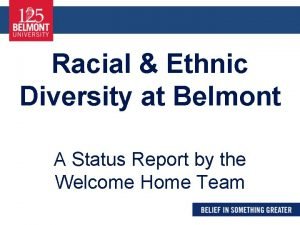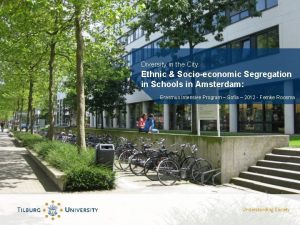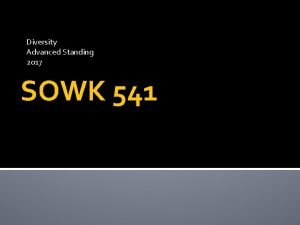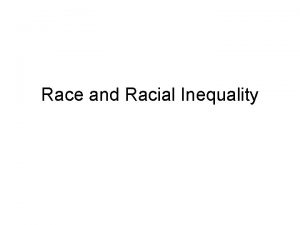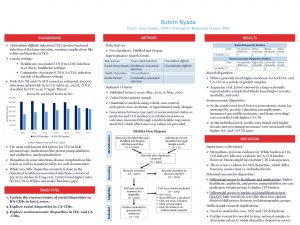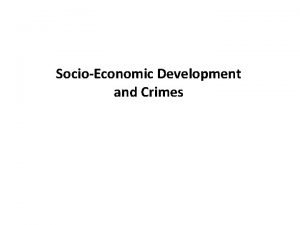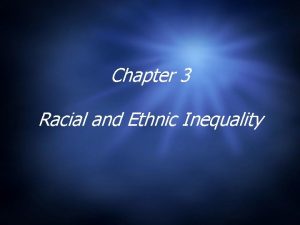Impact of Racial Ethnic and Socioeconomic Diversity Student

























- Slides: 25

Impact of Racial, Ethnic and Socioeconomic Diversity: Student Perceptions of Educational Outcomes In Prince William County Public Schools A Dissertation Presented to The Faculty of the School of Education Liberty University Joseph F. Fontanella February 19, 2008 Challenge Your Mind…Build Your Faith 1

Sequence of the Presentation • Introduction. • Methodology. • Results of the Study. • Significance of the Study and Conclusions. • Acknowledgements. • Questions. Challenge Your Mind…Build Your Faith 2

INTRODUCTION Challenge Your Mind…Build Your Faith 3

Background of the Study • “E Pluribus Unum”…. out of many, one. • Trends and concerns: – Racial, ethnic, linguistic, socioeconomic separation. – Resegregation. – Consequences of attending unequal schools. • Educators faced with: – Issues of educational disparities. – Difficulties in characterizing diverse schools. – Dealing with differing interactions between demographic. composition and policies. Challenge Your Mind…Build Your Faith 4

Statement of the Problem “There is little evidence of the educational benefits of diverse learning environments for all students. “ Solving the problem is: • Important - • And significant, – because of the need for evidence to uphold and support the consideration of race, ethnicity and socioeconomic status in decision making. – as schools and districts need the ability to continue to develop and refine diversity initiatives aimed at improving the success of all students. – Given recent trends in the nation’s courts which are limiting districts’ ability to pursue ethnic and race conscious policies to integrate schools. Challenge Your Mind…Build Your Faith 5

Purpose of the Study • Examine the relationship between diverse learning • environments and students’ perceptions of their educational experiences. Diversity as defined in this study: – extends to racial, ethnic, cultural, and socioeconomic attributes. – not to other factors of diversity, such as disabilities, giftedness, communication style, physical appearance, religion, learning style, speed of learning, comprehension, and so forth. Challenge Your Mind…Build Your Faith 6

Research Questions • Do students perceive classes in Prince William County high schools to be diverse? • Do students perceive lessons in Prince William County high school classrooms to be diverse? • Do students perceive diverse settings to be positively related to more comfortable exchanges among students? • Are perceived educational goals and aspirations similar across ethnic, racial and socioeconomic groups? • Are perceptions of institutional support towards pursuit of higher education similar across racial, ethnic and socioeconomic groups? Challenge Your Mind…Build Your Faith 7

METHODOLOGY Challenge Your Mind…Build Your Faith 8

Methodology-Overview • Quantitative, non-experimental survey methods • used. Five areas explored: – student diversity. – curricular diversity. – peer interaction. – future educational aspirations and goals. – perceptions of support by the school. • Data derived from a survey about student experiences with diversity in their schools and classroom. Challenge Your Mind…Build Your Faith 9

Survey Site and Subjects • Prince William County Public Schools served as the survey site. Maryland D. C. Prince William Virginia • • Subjects drawn from the target population of 11 th-grade public high school students. 199 students sampled from selected schools stratified by levels of racial and ethnic diversity and socioeconomic status or class. Challenge Your Mind…Build Your Faith 10

Instruments • Diversity Assessment Questionnaire: – Civil Rights Project at Harvard University in collaboration with the National School Boards Association’s Council of Urban Boards of Education. – Developed to test several different dimensions of experiences and attitudes regarding diversity. – Included questions for students about their: • experiences in their classrooms. • future goals. • educational aspirations. • attitudes and interests. Challenge Your Mind…Build Your Faith 11

Sampling – Socioeconomic Status. – Racial and Ethnic Diversity Index (REDI): REDI = 50 40 C - High Diversity, Low SES 30 C SCHOOL 10 SCHOOL 9 SCHOOL 6 District Overall = 19. 05% 20 B SCHOOL 4 SCHOOL 2 A Where: K is the number of groups. SCHOOL 8 SCHOOL 5 10 SCHOOL 1 X is the proportion of individuals from each racial/ethnic group. Impoverished and Diverse Impoverished and Homogenous District Overall = 0. 589 • Stratified Sampling Techniques used: Economically Disadvantaged % • 60 0 B – Med. Diversity, Med. SES SCHOOL 3 A - Low Diversity, High SES Affluent and Homogenous 0 SCHOOL 7 Affluent and Diverse 0. 5 Racial and Ethnic Diversity (Index) Challenge Your Mind…Build Your Faith 1. 0 12

Data Collection and Analysis • • Data Collection: – Paper and web-based means. – Sample spanned proportional levels of academic achievement. – Nominal demographic data and ordinal data in response to Likertscaled questions collected. – Data compiled/disaggregated by racial and ethnic groups and by school diversity indices. Data Analysis: – – Sigma Stat and Systatistical packages used. Chi-square. Correlation. Regression analysis. Challenge Your Mind…Build Your Faith 13

RESULTS OF THE STUDY Challenge Your Mind…Build Your Faith 14

Research Question 1 • Do students perceive classes in Prince William County high schools to be diverse? – H 0: There is no difference in the perceptions of student diversity between racial and ethnic groups within an educational setting. Rejected – H 0: There is no difference in the perceptions of student diversity between levels of diversity/socioeconomic status in varied educational settings. Rejected - Students reported their classes to be diverse, although classrooms appeared to be less diverse than schools as a whole. Challenge Your Mind…Build Your Faith 15

Research Question 2 • Do students perceive lessons in Prince William County high school classrooms to be diverse? – H 0: There is no difference in the perceptions of curricular diversity between racial and ethnic groups within an educational setting. Accepted – H 0: There is no difference in the perceptions of curricular diversity between levels of diversity/socioeconomic status in varied educational settings. Accepted – H 0: There is no relationship between student perceptions of curricular diversity and level of student diversity in educational settings. Rejected - Racial and cultural issues were frequently explored in classroom discussions. - Students reported greater diversity in the social studies vice English curriculum. - All groups reported approximately the same level of diversity in the curriculum. Challenge Your Mind…Build Your Faith 16

Research Question 3 • Do students perceive diverse settings to be positively related to more comfortable exchanges among students? – H 0: There is no difference in peer interaction comfort levels between racial and ethnic groups within an educational setting. Accepted – H 0: There is no difference in peer interaction comfort levels between levels of diversity/socioeconomic status in varied educational settings. Rejected -Across races and ethnic groups, students reported equal willingness to engage with peers and high comfort levels in doing so. -Students in settings of higher diversity reported greater comfort and willingness to operate in diverse classroom environments. Challenge Your Mind…Build Your Faith 17

Research Question 4 • Are perceived educational goals and aspirations similar across racial, ethnic and socioeconomic groups? – H 0: There is no difference in perceived educational goals and aspirations between racial and ethnic groups within an educational setting. Accepted – H 0: There is no difference in perceived educational goals and aspirations between levels of diversity/socioeconomic status in varied educational settings. Accepted -Student responses disclosed similarities by racial and ethnic group and by diversity/socioeconomic group, implying an equality of perceived opportunity. Challenge Your Mind…Build Your Faith 18

Research Question 5 • Are perceptions of institutional support towards pursuit of higher education similar across racial, ethnic and socioeconomic groups? – H 0: There is no difference in the perceptions of institutional support between racial and ethnic groups within an educational setting. Accepted – H 0: There is no difference in the perceptions of institutional support between levels of diversity/socioeconomic status in varied educational settings. Accepted – H 0: Educational goals and aspirations are independent of race, ethnicity, and the level of diversity in educational settings, therefore the regression coefficient is 0. Accepted - School faculty and staff generally encouraged student aspirations. - Encouragement and access to information was uniform across groups. - Students reported far less encouragement to take challenging courses. Challenge Your Mind…Build Your Faith 19

Significance of the Study and Conclusions Challenge Your Mind…Build Your Faith 20

Summary • The study found that: – there are high levels of diversity in Prince William County schools and classrooms, as well in the curriculum and social exchanges; – higher levels of diversity in the curriculum are related to increased student understanding of points of view different from their own; – students that are placed in settings of higher diversity are more comfortable with members of different racial/ethnic groups and appear more willing to operate in diverse classroom environments; – students that attend more diverse schools expressed a greater desire to live or work in multiracial settings compared to their more segregated peers; – perceived educational goals and aspirations are similar across ethnic, racial, and socioeconomic groups; – and that there were high levels of equality between racial/ethnic and socioeconomic groups in perceived educational opportunities for students. -Students from all backgrounds reported benefiting from the diversity of their schools, with strong uniformity in response by all groups. Challenge Your Mind…Build Your Faith 21

Implications for Research & Practice • Recommendations for future research: – Examine the relationship between diverse learning environments and former students’ perceptions of those impacts on their post-educational experiences. – Expand the current study with an additional research question: Can diversity experienced at the school level change student attitudes about citizenship? – Expand the study to other schools, such as magnets, charters, private and Christian schools. • – Conduct research focused on the value of integrating students by economic status at both the elementary and secondary levels. Implications for practice: – All races and classes share in the long-term benefits of diverse educational environments. - There are important implications for American society that may result from policies arising as a result of diversity research. Challenge Your Mind…Build Your Faith 22

Applications & Recommendations • • Institutional assessment of diversity provides a means of documenting progress and helps ensure accountability: – – Improves the climate of learning and also improves society at large. Provides support for affirmative action. Helps create or defend institutional policies. Helps evaluate the success of current school and district diversity initiatives. Provides impetus to redefine integration and achieve a balance of diversity across schools: – – Multiracial/multiethnic enrollment issues. Curricular diversity and institutional support. Socioeconomic status and linguistic diversity. Decisions that shape the demographics of individual schools. -Provides empirical evidence for decision makers. -Provides information that enables educational leaders to make changes to diversity initiatives that are both evocative and principled. Challenge Your Mind…Build Your Faith 23

ACKNOWLEDGEMENTS Challenge Your Mind…Build Your Faith 24

QUESTIONS Challenge Your Mind…Build Your Faith 25
 Chapter 10 racial and ethnic relations review worksheet
Chapter 10 racial and ethnic relations review worksheet Chapter 10 racial and ethnic relations
Chapter 10 racial and ethnic relations Chapter 10 racial and ethnic relations review worksheet
Chapter 10 racial and ethnic relations review worksheet Socioeconomic model
Socioeconomic model Socioeconomic examples
Socioeconomic examples Status fridge
Status fridge Ethical issue intensity example
Ethical issue intensity example Genetic diversity vs species diversity
Genetic diversity vs species diversity Genetic diversity vs species diversity
Genetic diversity vs species diversity Black studies and the racial mountain
Black studies and the racial mountain Jim crow laws in what region or regions did it exist
Jim crow laws in what region or regions did it exist Racial wealth gap simulation
Racial wealth gap simulation Promoting racial literacy in schools
Promoting racial literacy in schools William jennings bryan apush
William jennings bryan apush Racial prejudice
Racial prejudice Don tiburcio sa noli me tangere
Don tiburcio sa noli me tangere Racial insults
Racial insults In what regions did the literacy test exist
In what regions did the literacy test exist Cartel ley organica contra la discriminacion racial
Cartel ley organica contra la discriminacion racial Democracia racial
Democracia racial Lesson 2: racial discrimination
Lesson 2: racial discrimination Module 21 students diversity in motivation
Module 21 students diversity in motivation Ethnicity in postcolonial literature
Ethnicity in postcolonial literature Ethnocentric curriculum
Ethnocentric curriculum Whats ethnic group
Whats ethnic group How are ethnic groups and religious groups related
How are ethnic groups and religious groups related
